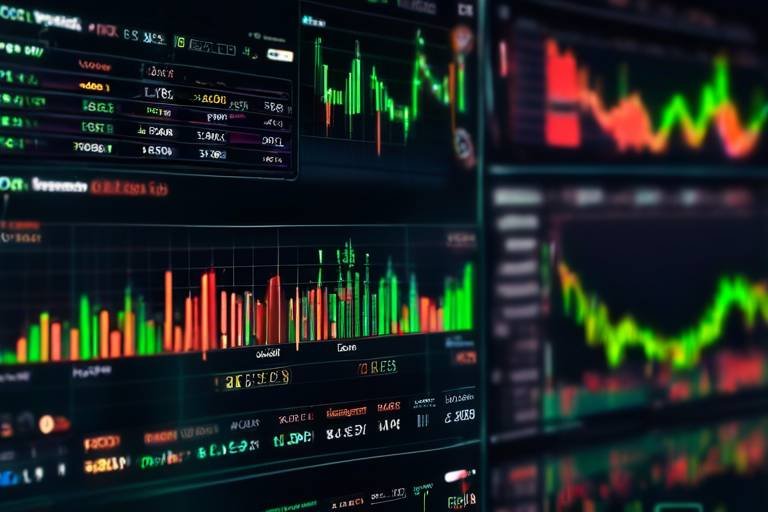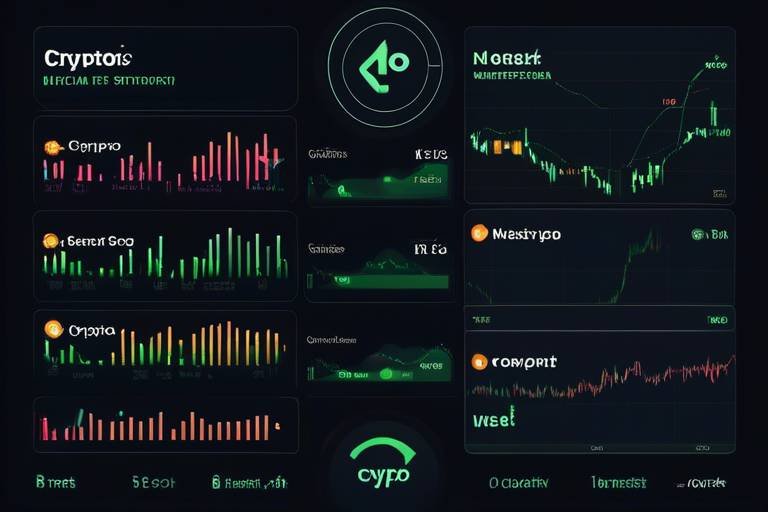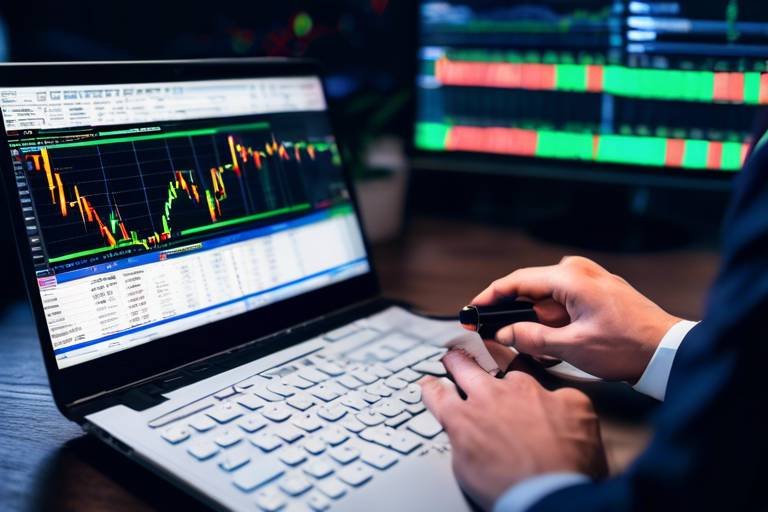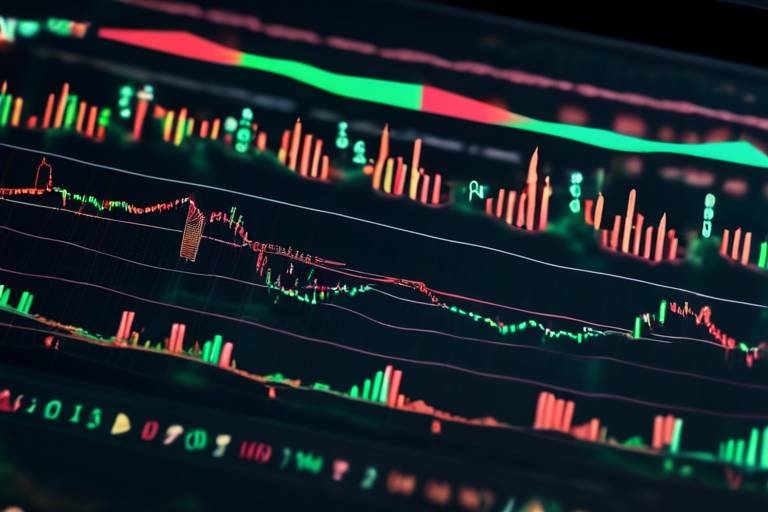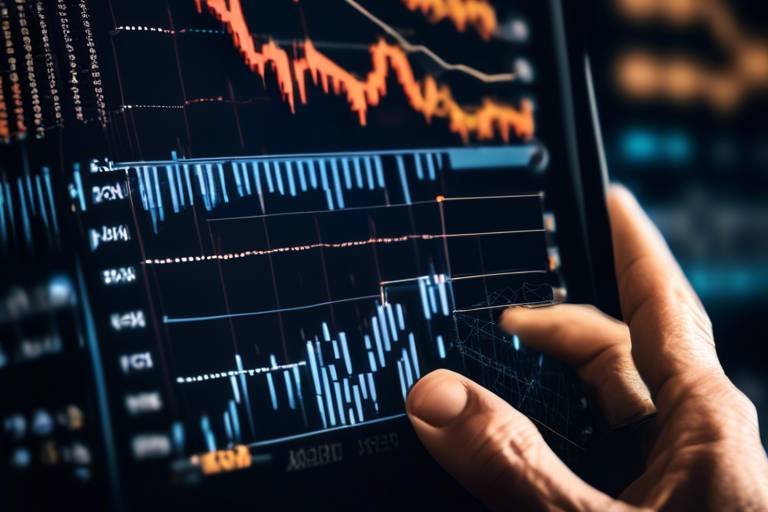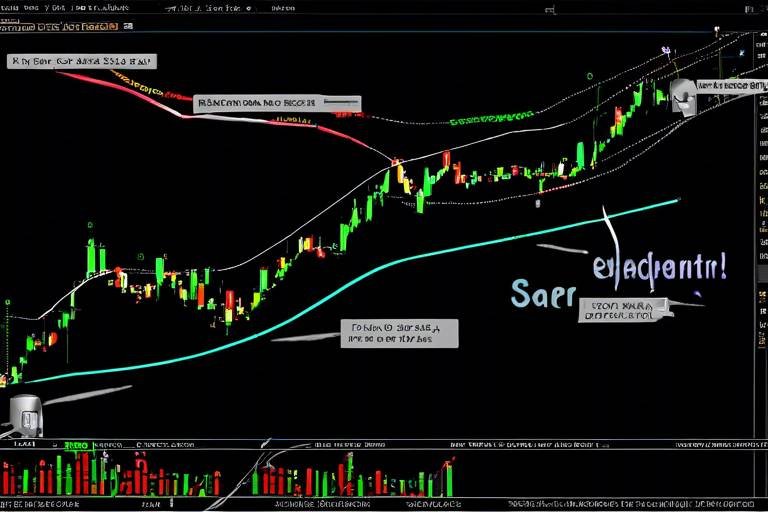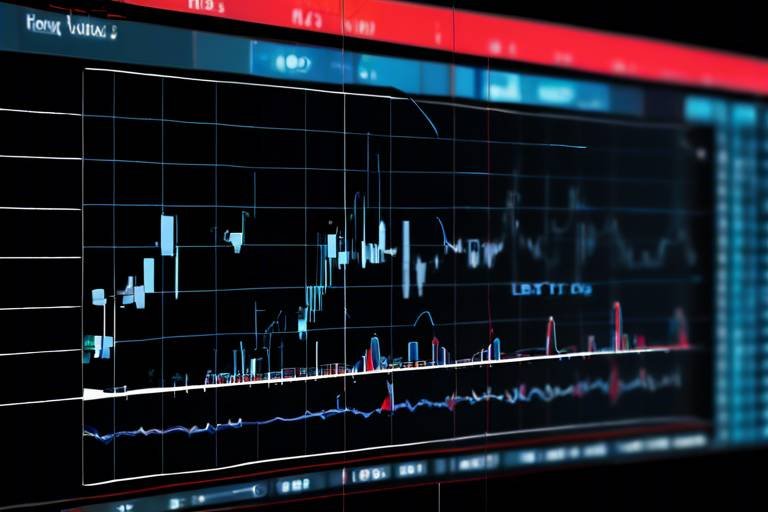The Role of Risk Assessment in Crypto Trading Strategies
In the fast-paced world of cryptocurrency trading, one of the most critical components that can significantly influence your success is risk assessment. Imagine navigating a stormy sea without a map or compass; that's what trading without a proper risk assessment feels like. It’s not just about making trades; it’s about making informed decisions that can safeguard your investments and enhance your profitability. Understanding the various risks involved and how to manage them can be the difference between thriving and merely surviving in this volatile market.
Risk assessment in crypto trading is akin to a safety net for trapeze artists. It allows traders to evaluate potential pitfalls and prepares them for the unexpected twists and turns of the market. By systematically identifying and analyzing risks, traders can make educated decisions that not only protect their capital but also position them for potential gains. This process involves examining various factors, including market volatility, liquidity, and even external economic conditions that may impact cryptocurrency prices.
Furthermore, the importance of risk assessment extends beyond just individual trades. It plays a crucial role in portfolio management. A well-structured portfolio that considers risk can lead to more stable returns over time. Just like a balanced diet is essential for good health, a diversified portfolio can help mitigate risks associated with specific cryptocurrencies. By assessing the risk profile of each asset, traders can allocate their resources more effectively, ensuring that they are not overly exposed to any single investment.
When you think about it, risk assessment is not just a one-time evaluation; it’s an ongoing process. The crypto market is notorious for its rapid changes, and what may seem like a safe investment today could quickly turn into a risky venture tomorrow. This is why continuous monitoring and reassessment of risks are vital. Traders need to stay updated with market trends, news, and technological advancements that could affect their investments. By doing so, they can adapt their strategies and make timely decisions that align with their risk tolerance and financial goals.
In summary, the role of risk assessment in crypto trading strategies cannot be overstated. It is the backbone of successful trading, enabling investors to navigate the complexities of the market with confidence. By understanding and managing risks effectively, traders can not only protect their investments but also seize opportunities that arise, leading to a more rewarding trading experience.
- What is risk assessment in crypto trading? Risk assessment involves identifying and analyzing potential risks in cryptocurrency trading to make informed decisions.
- Why is risk assessment important? It helps traders protect their investments, optimize trading strategies, and manage their portfolios effectively.
- What are the common types of risks in crypto trading? Common risks include market risk, credit risk, and operational risk.
- How can I manage risks in crypto trading? Effective strategies include diversification, using stop-loss orders, and continuous market monitoring.

Understanding Risk Assessment
This article explores the importance of risk assessment in developing effective crypto trading strategies, highlighting its impact on decision-making, portfolio management, and overall trading success.
When it comes to the unpredictable world of cryptocurrency, risk assessment is your best friend. Think of it as your personal GPS guiding you through the chaotic landscape of digital assets. Risk assessment involves identifying and analyzing potential risks in trading, which is crucial for making informed decisions. By evaluating factors such as market volatility, liquidity, and even geopolitical events, traders can gain valuable insights into how these elements may affect their investments.
Imagine you're planning a road trip. Before you hit the road, you’d want to check the weather, road conditions, and maybe even the traffic. Similarly, in crypto trading, conducting a thorough risk assessment helps you prepare for the potential bumps along the way. It allows traders to gauge how much they can afford to lose and what strategies they can employ to mitigate those losses.
In the realm of cryptocurrency, risks can be multifaceted. Here are some key areas that traders should focus on during their risk assessment:
- Market Volatility: Cryptocurrencies are notorious for their price swings. Understanding this volatility is crucial for making timely decisions.
- Liquidity: This refers to how easily you can buy or sell an asset without affecting its price. A lack of liquidity can lead to unfavorable trading conditions.
- Regulatory Changes: The crypto landscape is continuously evolving, with regulations changing frequently. Being aware of these changes can save you from unexpected losses.
Ultimately, a well-rounded risk assessment empowers traders to navigate the crypto market with confidence. It’s not just about crunching numbers; it’s about developing a holistic understanding of the market dynamics at play. By taking the time to analyze potential risks, traders can create tailored strategies that align with their risk tolerance and investment goals.
Crypto trading exposes investors to various risks, including market risk, credit risk, and operational risk. Understanding these risks is crucial for developing robust trading strategies that can withstand market fluctuations.
Market risk refers to the potential losses due to price fluctuations in cryptocurrency markets. Traders must assess this risk to protect their investments and optimize their trading strategies.
Analyzing volatility helps traders understand price movements and market sentiment, allowing them to adjust their strategies accordingly. This analysis is essential for minimizing risk and maximizing returns.
Identifying market trends enables traders to make informed decisions about entry and exit points. Understanding trends is key to managing market risk effectively.
Credit risk arises when a counterparty fails to fulfill their obligations. In crypto trading, assessing the credibility of exchanges and wallets is essential to mitigate potential losses.
Implementing effective risk management strategies is vital for successful crypto trading. These strategies help traders limit losses and protect profits while navigating the volatile crypto market.
Diversifying a portfolio across different cryptocurrencies can reduce overall risk. This strategy spreads exposure and minimizes the impact of poor performance in any single asset.
Using stop-loss orders allows traders to automatically sell assets when they reach a certain price, helping to limit potential losses and manage risk effectively.
Q: What is the importance of risk assessment in crypto trading?
A: Risk assessment is crucial as it helps traders identify potential risks, make informed decisions, and develop strategies that align with their investment goals.
Q: How can I assess market volatility?
A: You can assess market volatility by analyzing historical price movements, using technical indicators, and keeping an eye on market news that may impact prices.
Q: What are some common risk management strategies?
A: Common risk management strategies include diversification, setting stop-loss orders, and regularly reviewing your portfolio to adjust to market changes.

Types of Risks in Crypto Trading
When diving into the world of crypto trading, it's crucial to understand that it's not just a game of luck or intuition; it's a landscape filled with various risks that can significantly impact your investments. These risks can be broadly categorized into three main types: market risk, credit risk, and operational risk. Each of these risks presents unique challenges and requires traders to adopt specific strategies to navigate them effectively.
Market risk is perhaps the most well-known risk in crypto trading. It encompasses the potential losses that can occur due to price fluctuations in the cryptocurrency market. Given the notorious volatility of cryptocurrencies, market risk can be both a friend and a foe. For instance, a sudden spike in Bitcoin’s price can lead to substantial profits, but the reverse can also hold true. To mitigate market risk, traders often engage in volatility analysis. This involves studying historical price movements and market sentiment, which can provide insights into potential future trends. Additionally, traders must also focus on trend identification. By recognizing whether the market is trending upwards or downwards, traders can make more informed decisions regarding their entry and exit points.
Another critical aspect is credit risk, which surfaces when a counterparty fails to meet their obligations. In the context of crypto trading, this risk is particularly relevant when dealing with exchanges and wallets. If an exchange goes bankrupt or a wallet provider experiences a security breach, traders could face significant losses. Therefore, assessing the credibility of exchanges and ensuring that they adhere to robust security measures is essential. Traders should always conduct thorough research before committing their assets to any platform.
Lastly, we have operational risk. This risk stems from failures in internal processes, systems, or external events that can disrupt trading activities. For example, technical failures, such as server outages or software bugs, can prevent a trader from executing a timely trade, potentially resulting in missed opportunities or losses. To combat operational risk, traders should ensure they have contingency plans in place, such as using multiple exchanges and keeping backup wallets. This way, they can minimize the impact of any unforeseen issues that may arise.
In summary, understanding the various types of risks in crypto trading is not just beneficial; it's essential for any trader looking to succeed in this volatile market. By being aware of market, credit, and operational risks, traders can develop more robust strategies that not only protect their investments but also enhance their potential for profit.
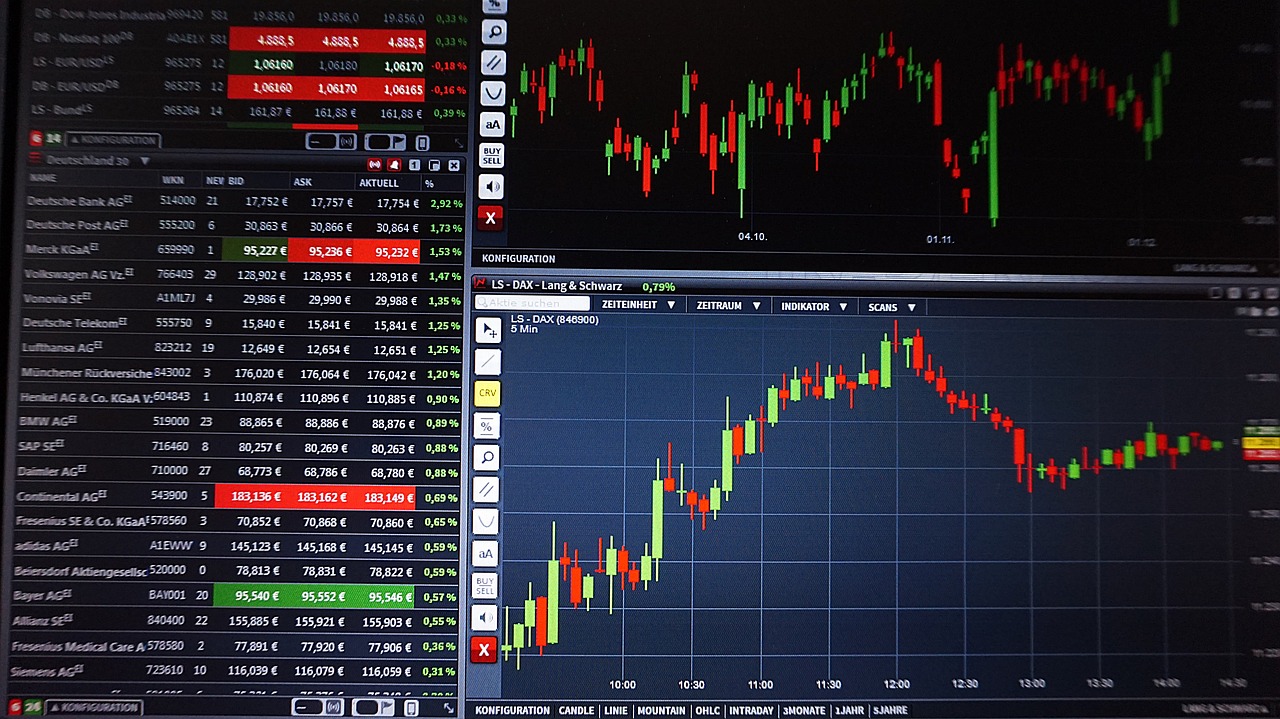
Market Risk
Market risk is a term that every crypto trader should have on their radar. It refers to the potential losses that can occur due to price fluctuations in the ever-volatile cryptocurrency markets. Imagine walking a tightrope; one wrong step, and you could find yourself in a precarious position. Similarly, in the world of crypto, the slightest market shift could lead to significant financial repercussions. Understanding and assessing this risk is crucial for every trader looking to protect their investments and optimize their trading strategies.
To effectively navigate market risk, traders must engage in comprehensive volatility analysis. This involves examining historical price movements and current market sentiment to gauge how a particular cryptocurrency might behave in the future. For instance, if Bitcoin has shown extreme fluctuations over the past few months, a trader needs to ask themselves: "Is this volatility a sign of a bullish trend or a potential crash?" By analyzing these patterns, traders can adjust their strategies to either capitalize on the volatility or safeguard their investments against it.
Another vital aspect of managing market risk is trend identification. Recognizing whether a market is trending upward, downward, or sideways can significantly influence a trader's decision-making process. For example, if a trader identifies a strong upward trend in Ethereum, they might decide to enter the market, anticipating further price increases. Conversely, if they notice a downward trend, they might choose to exit their position or even short the asset. Understanding these trends is key to managing market risk effectively and making informed decisions about entry and exit points.
It's also worth noting that market risk is not just about individual assets; it extends to the broader market as well. Economic factors, regulatory changes, and technological advancements can all influence the crypto market's overall health. Therefore, staying informed about global events and market news is essential for any trader. By keeping an eye on these external factors, traders can better prepare themselves for potential market shifts and adjust their strategies accordingly.
In summary, market risk is a multifaceted challenge that every crypto trader must confront. By engaging in thorough volatility analysis and trend identification, traders can develop strategies that not only protect their investments but also position them for potential gains. The key takeaway here is that understanding market risk is not just about avoiding losses; it's about leveraging knowledge to make smarter, more informed trading decisions.
- What is market risk in crypto trading?
Market risk refers to the potential losses that can occur due to price fluctuations in cryptocurrency markets. - How can I analyze market volatility?
Market volatility can be analyzed by studying historical price movements and current market sentiment. - Why is trend identification important?
Identifying market trends helps traders make informed decisions about when to enter or exit positions. - What external factors influence market risk?
Economic conditions, regulatory changes, and technological advancements can all impact market risk.

Volatility Analysis
When it comes to trading cryptocurrencies, is a game changer. Imagine trying to navigate through a stormy sea without a compass; that’s what trading feels like without understanding volatility. In the crypto world, prices can swing wildly within minutes, and if you're not prepared, it can lead to significant losses. By analyzing volatility, traders can gain insights into price movements and market sentiment, which are crucial for making informed decisions.
So, how do traders assess volatility? One common method is through the use of historical price data. By examining past price fluctuations, traders can identify patterns and predict future movements. For instance, if a particular cryptocurrency has shown a tendency to spike or drop by a certain percentage within a specific timeframe, this information can be invaluable. Additionally, traders often look at indicators such as the Average True Range (ATR) or the Volatility Index (VIX) to gauge market volatility.
Incorporating volatility analysis into your trading strategy can help you stay ahead of the curve. Here are a few key points to consider:
- Market Sentiment: High volatility often reflects increased trading activity and market sentiment. Understanding how traders feel about a particular asset can help you anticipate price movements.
- Entry and Exit Points: By analyzing volatility, you can determine optimal entry and exit points for your trades. For example, entering a position during a dip can maximize potential gains.
- Risk Management: Knowing when volatility is high allows you to adjust your risk management strategies. For instance, you might decide to tighten your stop-loss orders to protect your investments during turbulent times.
To illustrate the impact of volatility analysis, consider the following table that compares two cryptocurrencies based on their historical volatility:
| Cryptocurrency | Average Daily Volatility (%) | Price Movement (Last 30 Days) |
|---|---|---|
| Bitcoin (BTC) | 3.5% | +15% |
| Ethereum (ETH) | 4.8% | +25% |
As you can see from the table, Ethereum has a higher average daily volatility compared to Bitcoin, which means it has the potential for greater price swings. This information can influence a trader's decision on which asset to invest in based on their risk tolerance and trading strategy.
In conclusion, volatility analysis is not just a technical tool; it’s a crucial aspect of a trader's strategy. By understanding how to analyze and interpret volatility, traders can make more informed decisions, manage risks better, and ultimately enhance their trading success. So, the next time you're about to make a trade, take a moment to consider the volatility of the asset at hand. It might just be the difference between a successful trade and a costly mistake.
- What is volatility in crypto trading? Volatility refers to the degree of variation of a trading price series over time, often measured by standard deviation or variance. In crypto trading, it indicates how much the price of a cryptocurrency can change within a specific period.
- How can I measure volatility? Traders often use indicators like the Average True Range (ATR) or Bollinger Bands to measure volatility. Additionally, analyzing historical price data can provide insights into past price fluctuations.
- Why is volatility important for traders? Understanding volatility helps traders make informed decisions regarding entry and exit points, manage risks effectively, and optimize their trading strategies.

Trend Identification
Identifying market trends is like being a detective in the world of crypto trading. Just as a detective looks for clues to solve a mystery, traders analyze price movements and market behaviors to uncover trends that can guide their trading strategies. Understanding these trends is crucial because they provide valuable insights into potential future price movements. Think of trends as the compass that points you in the right direction; without them, you might find yourself lost in the chaotic world of cryptocurrency.
To effectively identify trends, traders often rely on various tools and techniques. One popular method is the use of technical analysis, which involves studying historical price charts to spot patterns. For instance, traders look for support and resistance levels, which are key price points where the market tends to reverse direction. By recognizing these levels, traders can make more informed decisions about when to enter or exit a trade.
Another essential aspect of trend identification is understanding the different types of trends that can occur in the market. These trends can be classified into three main categories:
- Uptrend: This is characterized by rising prices, where each successive peak is higher than the previous one. Traders often look for buying opportunities during an uptrend.
- Downtrend: In contrast, a downtrend features falling prices, with each successive low being lower than the last. Traders may consider selling or shorting during this phase.
- Sideways Trend: This occurs when prices move within a relatively stable range, indicating indecision in the market. Traders may adopt a wait-and-see approach during this period.
In addition to technical indicators, sentiment analysis plays a pivotal role in trend identification. By gauging the overall mood of the market—whether traders are feeling optimistic or pessimistic—traders can better anticipate potential price movements. Social media, news articles, and trading forums can provide insights into market sentiment, which can be a powerful tool for identifying trends.
Ultimately, mastering trend identification is about combining various analytical methods and staying attuned to the ever-changing dynamics of the crypto market. By doing so, traders can enhance their decision-making process and improve their chances of success. Remember, trends are not just random occurrences; they are signals that can lead you to profitable opportunities if you learn to read them correctly.
Q: How can I identify a trend in cryptocurrency trading?
A: You can identify trends by analyzing price charts using technical analysis tools such as moving averages, support and resistance levels, and trend lines. Additionally, monitoring market sentiment through news and social media can provide insights into potential trends.
Q: What is the importance of trend identification?
A: Trend identification is crucial because it helps traders make informed decisions about when to enter or exit trades. By understanding market trends, traders can optimize their strategies and increase their chances of profitability.
Q: Are there different types of trends in crypto trading?
A: Yes, there are three main types of trends: uptrends (rising prices), downtrends (falling prices), and sideways trends (stable prices). Recognizing these trends can guide your trading decisions.

Credit Risk
Credit risk is a significant concern in the world of crypto trading, and it arises when a counterparty fails to fulfill their obligations. In simpler terms, it's like trusting a friend to pay you back after lending them some money; if they don’t, you’re left holding the bag. In the volatile landscape of cryptocurrency, where exchanges and wallets can sometimes feel like the Wild West, assessing the credibility of these entities becomes paramount. If a trader is not diligent in evaluating the trustworthiness of the platforms they use, they may face unexpected losses that could have been avoided with a little foresight.
One of the most critical aspects of mitigating credit risk is to conduct thorough due diligence on the exchanges and wallets involved in your trading activities. This means looking into their history, security measures, and customer reviews. A reputable exchange should have a transparent track record, robust security protocols, and a responsive customer service team. To help you in this process, here are some factors you might want to consider when assessing credit risk:
- Regulatory Compliance: Is the exchange compliant with local laws and regulations?
- Security Features: What security measures are in place to protect users' funds?
- Insurance Policies: Does the platform offer any insurance on deposits?
- User Feedback: What do other traders say about their experiences with the exchange?
By keeping these factors in mind, traders can better navigate the murky waters of credit risk. Additionally, it's wise to diversify your assets across multiple platforms rather than putting all your eggs in one basket. This strategy not only spreads your exposure but also minimizes the impact of any single platform's failure on your overall portfolio. Imagine a scenario where your funds are spread across several exchanges; if one were to encounter issues, your entire investment wouldn't be jeopardized.
Moreover, staying updated on the latest news and developments in the crypto space can provide valuable insights into potential credit risks. For instance, if a particular exchange faces regulatory scrutiny or reports a security breach, being informed allows you to take immediate action to protect your assets. In this fast-paced environment, knowledge truly is power, and it can mean the difference between a profitable trade and a devastating loss.
In conclusion, understanding and managing credit risk is essential for anyone looking to succeed in crypto trading. By performing due diligence, diversifying your assets, and staying informed, you can significantly reduce your exposure to credit risk and enhance your overall trading strategy. Remember, in the world of crypto, it's not just about making profits; it's also about safeguarding your investments from unforeseen pitfalls.
- What is credit risk in crypto trading? Credit risk refers to the possibility of losing money when a counterparty, such as an exchange or wallet provider, fails to meet their obligations.
- How can I mitigate credit risk? You can mitigate credit risk by conducting thorough research on exchanges, using multiple platforms, and staying updated on industry news.
- Why is due diligence important in crypto trading? Due diligence helps you assess the credibility and reliability of trading platforms, reducing the risk of losses due to defaults or failures.
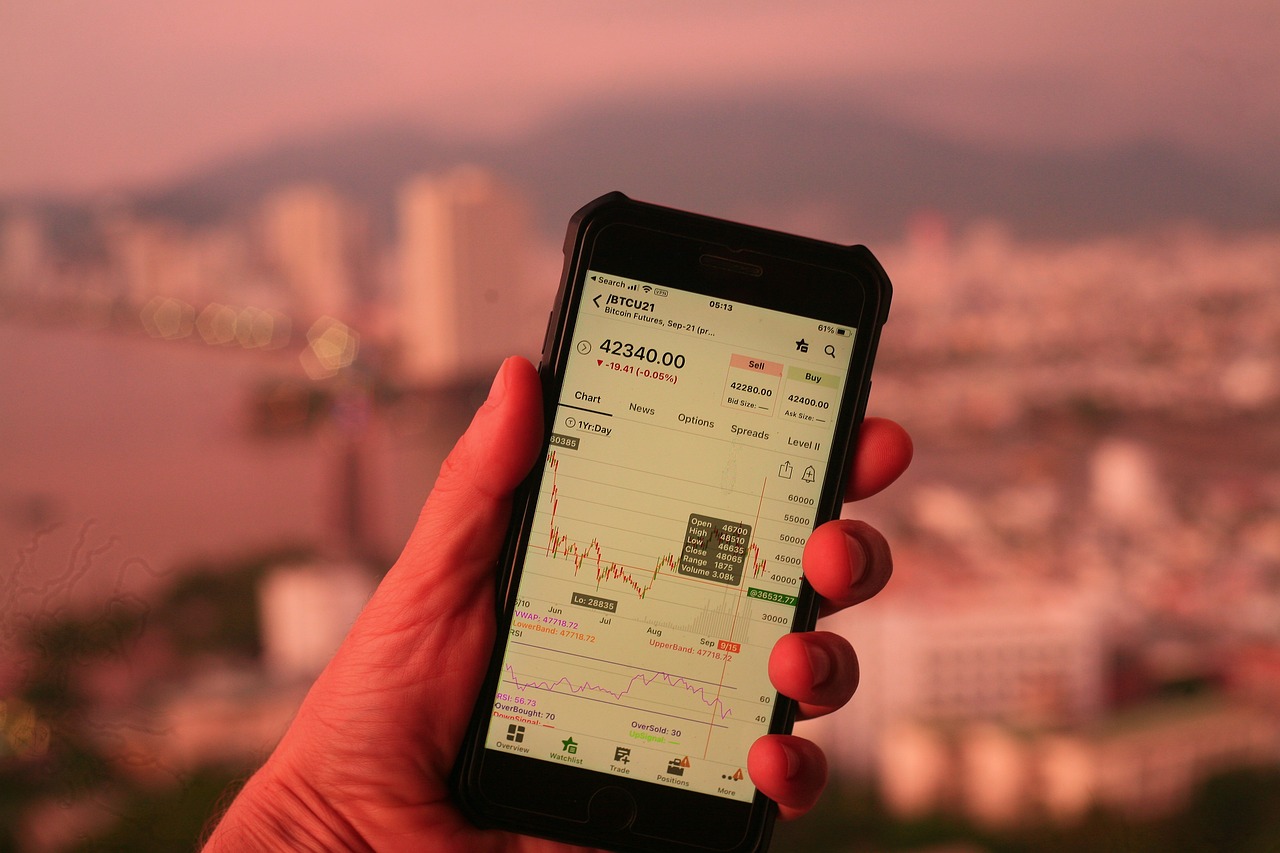
Risk Management Strategies
Implementing effective is not just a good practice; it's a fundamental necessity for anyone serious about navigating the unpredictable waters of crypto trading. The crypto market is notorious for its volatility, and without a solid plan in place, traders can find themselves facing catastrophic losses. So, how can you protect your investments while still aiming for those enticing returns?
First and foremost, diversification is key. Think of it like spreading your bets in a casino; if one game goes south, you still have others to rely on. By diversifying your portfolio across various cryptocurrencies, you can significantly reduce your overall risk. This strategy ensures that the poor performance of a single asset doesn’t sink your entire investment. Instead, it spreads your exposure, allowing you to benefit from the potential upsides of multiple assets. For instance, if Bitcoin is experiencing a downturn, your investments in Ethereum or Litecoin might still be performing well, balancing out your losses.
Another crucial strategy is the use of stop-loss orders. These are like your safety net in the world of trading. A stop-loss order automatically sells your asset when it hits a predetermined price, limiting your losses in a rapidly declining market. Imagine you're on a roller coaster, and you know when to pull the emergency brake; that’s what a stop-loss does for your trades. By setting these orders, you can take the emotion out of trading and make more rational decisions, which is vital in a market that can swing dramatically in a matter of minutes.
But wait, there's more! Risk management isn't just about limiting losses; it’s also about maximizing your gains. This is where position sizing comes into play. By determining how much of your total capital to invest in a single trade, you can manage your exposure effectively. A common rule of thumb is to risk only a small percentage of your total capital on any one trade, often recommended at around 1-2%. This way, even a series of losses won’t decimate your portfolio. For example, if you have $10,000 to invest, risking only $100 to $200 on a single trade can keep you in the game longer, allowing for recovery and future opportunities.
Moreover, keeping a close eye on market trends and news events can also bolster your risk management strategies. The crypto landscape is ever-changing, influenced by regulatory news, technological advancements, and market sentiment. By staying informed, you can anticipate potential risks and adjust your strategies proactively. Think of it as having a weather app that alerts you to storms; it allows you to prepare and adjust your sails accordingly.
In summary, effective risk management strategies are essential for anyone looking to thrive in the world of crypto trading. By diversifying your portfolio, utilizing stop-loss orders, practicing prudent position sizing, and staying informed about market trends, you can navigate the tumultuous crypto seas with more confidence and less fear. The goal is not just to survive but to thrive, turning the inherent risks of crypto trading into opportunities for growth.
- What is risk management in crypto trading?
Risk management in crypto trading refers to strategies and techniques used to minimize potential losses while maximizing gains in a volatile market. - How can diversification help in crypto trading?
Diversification helps to spread risk across different assets, reducing the impact of poor performance in any single cryptocurrency. - What are stop-loss orders?
Stop-loss orders are automatic sell orders that trigger when an asset reaches a specific price, helping traders limit their losses. - Why is position sizing important?
Position sizing helps manage risk by determining how much capital to invest in a single trade, ensuring that losses do not significantly impact the overall portfolio.

Diversification
Diversification is one of the cornerstones of effective risk management in crypto trading. Think of it as spreading your bets across different games at a casino rather than putting all your chips on a single number at the roulette table. By investing in a variety of cryptocurrencies, traders can significantly reduce their exposure to the volatility of any single asset. This strategy is particularly important in the crypto market, where prices can swing wildly in a matter of hours, or even minutes.
When you diversify your portfolio, you’re essentially creating a safety net. If one cryptocurrency takes a nosedive, the impact on your overall portfolio is cushioned by the performance of other assets that may be thriving. For instance, if you have investments in Bitcoin, Ethereum, and a few altcoins, a downturn in Bitcoin's price might be offset by gains in Ethereum or one of your altcoins. This balancing act is crucial for maintaining a stable investment strategy.
However, it’s important to note that diversification doesn’t mean blindly investing in every cryptocurrency available. Traders should conduct thorough research to select a mix of assets that complement each other. Here are a few factors to consider when diversifying your crypto portfolio:
- Market Capitalization: Include a mix of large-cap, mid-cap, and small-cap cryptocurrencies to balance risk and reward.
- Technology and Use Case: Invest in cryptocurrencies that serve different purposes, such as payment systems, smart contracts, or decentralized finance (DeFi) platforms.
- Geographic Exposure: Consider investing in cryptocurrencies from different regions to mitigate regional risks.
Moreover, diversification can also involve allocating a portion of your portfolio to non-crypto assets, such as stocks or bonds, which can further stabilize your investments. The key is to find a balance that aligns with your risk tolerance and investment goals.
In conclusion, diversification is not just a buzzword; it’s a strategic approach that can help traders navigate the unpredictable waters of the cryptocurrency market. By carefully selecting a diverse range of assets, you can enhance your chances of achieving long-term success while minimizing risk. Remember, in the world of crypto, it’s not just about how much you invest, but how wisely you spread that investment across different opportunities.
- What is the best way to diversify a crypto portfolio?
The best way to diversify is to invest in a mix of cryptocurrencies with varying market capitalizations, technologies, and use cases. This helps to spread risk and improve potential returns.
- How much of my portfolio should be diversified?
While there's no one-size-fits-all answer, many experts suggest that at least 20-30% of your portfolio should be in diversified assets to mitigate risk effectively.
- Can I diversify with just a few cryptocurrencies?
Yes, you can diversify with just a few cryptocurrencies, but it's important to choose those that are fundamentally different in terms of technology and market behavior.

Stop-Loss Orders
In the unpredictable world of crypto trading, where prices can swing wildly in a matter of minutes, serve as a lifeline for traders looking to protect their investments. But what exactly are stop-loss orders, and how can they help you navigate the turbulent waters of cryptocurrency markets? Simply put, a stop-loss order is an instruction to sell an asset once it reaches a specified price. This mechanism is designed to limit an investor's loss on a position. For instance, if you purchase Bitcoin at $50,000 and set a stop-loss at $45,000, your investment will automatically sell if the price drops to that threshold, thereby preventing further losses.
One of the key advantages of using stop-loss orders is the ability to take emotion out of trading. Fear and greed can cloud judgment, leading to impulsive decisions that can be detrimental to your portfolio. By pre-defining your exit strategy, you can stick to your plan, regardless of market sentiment. This disciplined approach is essential in the volatile crypto landscape, where emotional trading can lead to significant financial setbacks.
Moreover, stop-loss orders can be tailored to fit your trading style and risk tolerance. There are generally two types of stop-loss orders: the standard stop-loss and the trailing stop-loss. A standard stop-loss remains fixed at a specific price, while a trailing stop-loss moves with the market price, allowing for greater flexibility. For example, if you set a trailing stop-loss at 10% below the market price, and the asset increases in value, your stop-loss will adjust upward, locking in profits while still providing a safety net against potential downturns.
However, it's essential to note that stop-loss orders are not foolproof. In highly volatile markets, prices can gap down, meaning they can drop sharply past your stop-loss level without executing the sale. This phenomenon is often referred to as slippage, and it can result in greater losses than anticipated. Therefore, while stop-loss orders are a valuable tool in risk management, they should be used in conjunction with other strategies to ensure a well-rounded approach to trading.
To illustrate the functionality of stop-loss orders, consider the following table that compares the outcomes of using a stop-loss versus not using one:
| Scenario | With Stop-Loss | Without Stop-Loss |
|---|---|---|
| Initial Investment | $1,000 | $1,000 |
| Price Drop | Sold at $900 (10% loss) | Held until $500 (50% loss) |
| Final Outcome | $900 | $500 |
As shown in the table, implementing a stop-loss order can significantly mitigate losses during market downturns. By limiting your exposure, you can preserve capital and maintain the ability to invest in future opportunities. Ultimately, incorporating stop-loss orders into your trading strategy not only enhances your risk management framework but also allows you to trade with greater confidence.
- What is a stop-loss order? A stop-loss order is an automatic instruction to sell an asset once it reaches a predetermined price, helping to limit potential losses.
- How do I set a stop-loss order? You can typically set a stop-loss order through your trading platform by specifying the asset, the stop-loss price, and any additional parameters.
- Can stop-loss orders guarantee profits? While stop-loss orders can help protect against losses, they do not guarantee profits, especially in volatile markets where slippage can occur.
- What is the difference between a standard stop-loss and a trailing stop-loss? A standard stop-loss remains fixed at a specific price, while a trailing stop-loss adjusts with market movements, allowing for greater profit potential.
Frequently Asked Questions
- What is risk assessment in crypto trading?
Risk assessment in crypto trading involves identifying and analyzing potential risks that could impact investments. It helps traders evaluate factors like market volatility and liquidity, enabling them to make informed decisions that can lead to better trading outcomes.
- What are the main types of risks in crypto trading?
There are several types of risks in crypto trading, including:
- Market Risk: The risk of losses due to price fluctuations in the cryptocurrency market.
- Credit Risk: The risk that a counterparty, such as an exchange or wallet provider, fails to meet their obligations.
- Operational Risk: Risks arising from internal processes, systems, or external events that can affect trading operations.
- How can I manage market risk effectively?
To manage market risk effectively, traders can analyze volatility and identify market trends. This involves understanding price movements and market sentiment, which allows for timely adjustments to trading strategies.
- What is the importance of diversification in crypto trading?
Diversification is crucial because it spreads risk across different cryptocurrencies. By not putting all your eggs in one basket, you minimize the impact of poor performance from any single asset, thereby protecting your overall investment.
- How do stop-loss orders work?
Stop-loss orders are designed to automatically sell your assets when they reach a specified price. This tool helps traders limit potential losses and manage risk by ensuring they don't hold onto a losing investment for too long.
- Can risk assessment help improve trading success?
Absolutely! By incorporating risk assessment into your trading strategy, you can make more informed decisions, better manage your portfolio, and ultimately enhance your chances of success in the volatile crypto market.




